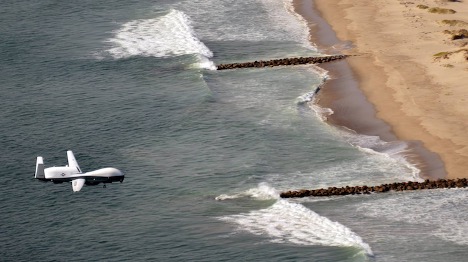Sense and Avoid System for Triton
Northrop Grumman has received a contract from the US Navy to develop a sense and avoid (SAA) system for the MQ-4C Triton high-altitude long-endurance unmanned maritime ISR system.
Despite flying high above most air traffic, the SAA system will allow the Triton to safely operate in controlled airspace, particularly when climbing and descending near commercial traffic lanes, or when operating in proximity to civilian airfields.
“Sense and avoid will help ensure our customers can safely operate Triton out of almost any airfield or airport in the world, in full compliance with current and emerging aviation regulations around the globe,” Northrop Grumman’s vice president and program manager, Triton programs, Doug Shaffer said in a release.
“Incorporating SAA capability will add tremendous flexibility to the Triton system and how the US Navy, Royal Australian Air Force and potential future customers seamlessly integrate Triton into their concepts of operation.”
Developed in conjunction with Aviation Communications & Surveillance Systems (ACSS) – a joint-venture between L3Harris and Thales – a certified SAA system is considered essential for RAAF Triton operations, particularly in the airspace around RAAF Edinburgh where Triton’s ground-based operations and maintenance is expected to be located.
ACSS president and vice president of engineering, Steve Alwin added, “As a leader in integrated Traffic Collision Avoidance Systems (TCAS) and Automatic Dependent Surveillance-Broadcast (ADS-B) systems, we are actively driving innovation in operational efficiency and airspace safety for the emerging unmanned aircraft platforms. Our sense and avoid solutions enable active collision avoidance, empowering them to operate safely in commercial airspace.”
This article was published by ADBR on May 11, 2021.

